Chronological Bible Buying Guide: Find the Best One for You
Introduction
Reading and studying the Bible is one of the most enriching and transformative parts of your spiritual journey. With so many different Bible translations and formats available, choosing the right one can feel overwhelming. However, if you want to experience Scripture in a fresh and engaging way, a chronological Bible might be the perfect option.
Unlike traditional Bibles that follow the standard book order (Genesis to Revelation), a chronological Bible arranges events in the order they actually happened. This unique structure helps readers understand the historical flow of biblical events, making it easier to see connections between different passages, prophecies, and fulfillments.
Whether you’re a seasoned Bible student or someone looking for a new approach to reading Scripture, a chronological study Bible can provide deeper insights, historical context, and a more immersive experience.
What You’ll Find in This Chronological Bible Buying Guide
In this guide, we’ll cover everything you need to know before choosing the best chronological Bible for your needs, including:
- Why a chronological Bible can transform your Bible study
- The best chronological Bibles available today
- Pros and cons of using a chronological Bible
- Who should (and shouldn’t) use a chronological Bible as their primary study Bible
As someone who has used multiple Bible versions and study formats, I personally love reading from a chronological study Bible. However, while it’s a fantastic tool for understanding biblical history, it may not be the best option as your sole or primary Bible. We’ll discuss some of the reasons why later in this guide.
My Top Recommendation: NLT Chronological Life Application Study Bible
If you’re looking for the best chronological Bible, my top recommendation is the NLT Chronological Life Application Study Bible. This Bible not only arranges Scripture in chronological order but also provides helpful study notes, historical context, and practical life applications.
Key Features of the NLT Chronological Life Application Study Bible
✅ Chronological order of biblical events – Helps you follow the Bible’s timeline seamlessly.
✅ Comprehensive study notes – Offers historical background, cultural insights, and theological explanations.
✅ Cross-references – Connects related passages for deeper understanding.
✅ Easy-to-read New Living Translation (NLT) text – A clear and accessible Bible version.
✅ Multiple format options – Available in hardcover, leather, and digital editions.
I personally love this Bible because it provides a smooth reading experience while deepening your understanding of Scripture. If you want to see biblical history unfold like a story, this is one of the best choices.
But before we dive into the full list of the best chronological Bibles, let’s explore why using one can be a game-changer for your faith journey.
Would you like me to expand the section on the best chronological Bibles, listing multiple recommendations with SEO-friendly descriptions?
4oChronological Bible Buying Guide: Find the Best One for You
Introduction
Reading and studying the Bible is one of the most enriching things you can do in your spiritual journey. With so many different translations available, choosing the right Bible can feel overwhelming. However, if you’re looking for a unique way to experience Scripture, a chronological Bible might be the perfect choice.
A chronological Bible arranges the events of the Bible in the order they actually happened, rather than the traditional book-by-book format. This can be incredibly helpful for readers who want to better understand the historical context of biblical events and see how different passages connect across time.
In this Chronological Bible Buying Guide, we’ll explore:
- Why you should consider a chronological Bible
- Some of the best chronological Bibles available
- The pros and cons of using one
While I personally love reading from a well-structured chronological study Bible, it’s important to know that it may not be the best option as your primary Bible. We’ll discuss some of the potential drawbacks as well.
My Top Recommendation: NLT Chronological Life Application Study Bible
If you’re looking for the best chronological Bible, my top choice is the NLT Chronological Life Application Study Bible. Not only does it present Scripture in a chronological order, but it also includes:
- Study notes and historical context
- Cross-references to connect related passages
- Easy-to-understand New Living Translation (NLT) text
- Multiple format options
It’s one of my favorites because it provides a deeper understanding of biblical stories while maintaining a smooth reading experience.
Before we dive into the pros and cons of chronological Bibles, let’s take a look at some of the most popular options available.
Chronological Bible Buying Guide
There is no lack of good choices in a chronological Bible. Here are some good ones.
My favorite and the one I keep close by is the NLT Chronological Life Application Study Bible. You can get it in hardback or soft imitation leather.
[amazon box=”1414339275″]
[amazon box=”1414339283″]
I really love to use this Bible when I’m trying to get the entire context of a particular passage. It is a very enjoyable Bible to read. This is not only a chronological Bible but a great study Bible that covers all types of additional information, and notes. It comes in several versions and is my favorite as a chronological study Bible. The Chronological Life Application Bible is also available here in the Kindle format for download.
[amazon box=”0785239529″]
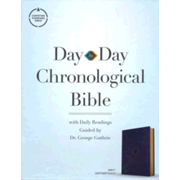 |
CSB Day-by-Day Chronological Bible–soft leather-look, navy By Holman Bible Publishers |
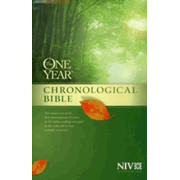 |
NIV One Year Chronological Bible, Paperback By Tyndale House |
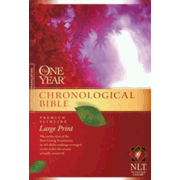 |
NLT One Year Chronological Bible, Large Print Softcover By Tyndale House |
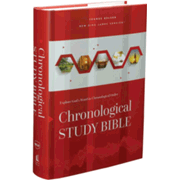 |
NKJV Chronological Study Bible, Hardcover By Thomas Nelson |
For those who love the King James Version (KJV) rather than the New King James Version (NKJV) you can find the (KJV) Chronological Life Application Study bible here.
You can also find many more options for Chronological Bibles Here.
A Chronological Bible – Helping You Understand the Sequence of Events
Here at LivingPraying.com, we believe the Bible is the most important book in the world. It’s not just a religious text—it’s God’s inspired Word, filled with wisdom, truth, and the message of salvation. It’s also the most published and best-selling book of all time, with billions of copies distributed worldwide.
However, when considering which Bible to buy, especially if you’re interested in a chronological Bible, there are several factors to keep in mind.
The Bible: A Collection of Books with a Rich History
The Bible isn’t just one book—it’s a collection of 66 books, including historical narratives, poetry, prophecy, wisdom literature, and personal letters. These were written by about 40 inspired authors over a span of 1,500+ years, across various cultures and historical contexts.
Even though each book remains consistent in its divine message, the traditional arrangement of the Bible is not always in the exact order that events occurred. The Old Testament, for example, groups books by literary type rather than strict chronology:
- Law (Torah/Pentateuch) – Genesis, Exodus, Leviticus, Numbers, Deuteronomy
- History – Joshua, Judges, Ruth, 1 & 2 Samuel, 1 & 2 Kings, etc.
- Poetry & Wisdom – Job, Psalms, Proverbs, Ecclesiastes, Song of Solomon
- Prophecy – Isaiah, Jeremiah, Ezekiel, Daniel, etc.
The New Testament follows a similar structure, with the Gospels, Acts, Epistles, and Revelation, but not always in the sequence in which the events unfolded.
Why a Chronological Bible Can Transform Your Bible Study
If you’ve ever been confused about biblical timelines, a Chronological Bible can help. Unlike a traditional Bible, a Chronological Bible arranges the text based on when events actually occurred rather than how they are grouped by genre or author.
✅ Brings Biblical History to Life – Seeing events unfold in order helps you understand the grand narrative of the Bible.
✅ Enhances Biblical Context – Understanding when and where events happened allows you to see connections between different passages.
✅ Combines Parallel Accounts – Events recorded in multiple books (such as Kings and Chronicles or the four Gospels) are placed side by side for a fuller perspective.
✅ Clarifies Old Testament Prophecy – Seeing when prophets like Isaiah, Jeremiah, and Daniel spoke in relation to historical events deepens understanding.
✅ Strengthens Faith & Understanding – Watching the biblical story unfold as one continuous timeline gives a clearer picture of God’s plan.
With so many books, authors, and historical periods, the Bible’s timeline can sometimes feel overwhelming. A Chronological Bible weaves together chapters and verses in the order they happened, allowing you to follow the historical progression of God’s plan.
If you’ve ever wished you could read the Bible like a seamless story, a Chronological Study Bible is an incredible tool that can deepen your faith and understanding.

Advantages of Reading Chronological Bible
Helps you Have Better Focus on the Story Line
It will help you clear up the storyline and sequence of events in the Bible. If you are looking at the four Gospels, for instance, each one might tell various accounts of Jesus’ ministry. Have you ever wondered how the stories in the other Gospels fit in the timeline? Well, a chronological Bible will help you do that. When you are discovering and studying what you believe about Biblical theology it can be a definite help.
Helps You Connect the Various Biblical Characters To Each Other
When the scriptures are assembled in the order that they happened, you can more clearly see how major Bible characters and their stories can ver very much be related to each other. This can be especially true in the Old Testament where the writings can be related but the events may actually be hundreds of years apart.
It Can Help You In Your Comprehension of What God Is Doing in The ScriptuAdvantages of Reading a Chronological Bible
If you’re looking to deepen your understanding of Scripture and see the Bible’s story unfold more clearly, a Chronological Bible can be a game-changer. Traditional Bibles arrange books by literary type rather than historical order, which can sometimes make it difficult to see how events are connected.
By reading the Bible in chronological order, you can enhance your comprehension, make clearer connections between biblical figures, and develop a richer appreciation for God’s unfolding plan. Here are four major benefits of using a Chronological Study Bible:
1. Helps You Have Better Focus on the Storyline
One of the most significant advantages of a Chronological Bible is that it helps you follow the Bible’s overarching narrative more clearly.
For example, when reading the four Gospels (Matthew, Mark, Luke, and John), you might notice that they each present different details about Jesus’ life and ministry. Have you ever wondered how the stories fit together? A chronological Bible places parallel Gospel accounts side by side, helping you see:
✅ The sequence of Jesus’ ministry – When and where each event occurred.
✅ How the Gospels complement each other – Understanding why certain details appear in some books and not others.
✅ The progression of key teachings and miracles – How Jesus’ ministry unfolded over time.
This structured approach is also beneficial for Old Testament history, helping readers follow the lives of key figures such as Moses, David, Elijah, and the prophets in the order their stories happened. If you are studying biblical theology, a Chronological Bible provides a clearer picture of how God’s plan unfolded through time.
2. Helps You Connect the Various Biblical Characters to Each Other
Since the Bible was written over a span of more than 1,500 years, events are often recorded in different books by different authors. A Chronological Bible helps you see the bigger picture by connecting major biblical figures and their interactions across history.
For example:
- The prophets and the kings – When reading about Israel’s kings (1 & 2 Kings, 1 & 2 Chronicles), a chronological Bible places prophetic books like Isaiah, Jeremiah, and Daniel alongside the reigns of the kings they ministered to. This helps readers understand why certain prophecies were given at specific times.
- Ezra, Nehemiah, and Esther – These books cover overlapping periods in Israel’s post-exilic history, but they are not in order in a traditional Bible. A chronological arrangement helps you see how their lives and leadership were interconnected.
- The New Testament letters – The Apostle Paul wrote letters to churches and individuals during his missionary journeys. A chronological Bible places his epistles (Romans, Corinthians, Ephesians, etc.) alongside the events of Acts, helping you see how they relate to the early church’s growth.
Seeing these connections can give you a deeper understanding of biblical history and how God orchestrated events across generations.
3. Helps You Better Understand God’s Redemptive Plan
The Bible is not just a collection of historical events—it’s God’s unfolding plan of redemption. A Chronological Bible allows you to see the grand narrative of Scripture from Creation to Christ to the New Creation, helping you:
✅ Follow the progressive revelation of God’s plan – See how God’s covenants with Noah, Abraham, Moses, and David lead to the ultimate fulfillment in Jesus Christ.
✅ Observe the work of the Triune God – Understand how the Father, Son, and Holy Spirit work together throughout history.
✅ Recognize recurring themes – Watch how God’s mercy, justice, and faithfulness remain consistent across time.
For example, Old Testament prophecies about the Messiah take on new meaning when you see their direct fulfillment in Jesus’ life. Reading Isaiah’s prophecies alongside the Gospel accounts makes it easier to recognize how Jesus perfectly fulfilled the Old Testament predictions.
Understanding the sequence of events also helps you grasp why certain events happened when they did. For instance, seeing Israel’s exile alongside God’s warnings through the prophets makes it clear that their disobedience led to judgment, but God’s grace still provided restoration.
4. Makes Bible Reading More Engaging and Enjoyable
The Bible is already the most fascinating book ever written, but reading it chronologically can make it even more immersive.
- Reading events in order provides a natural flow, making it easier to stay engaged for longer periods.
- Seeing how different passages connect makes the Bible feel more like a cohesive story rather than disconnected books.
- A chronological structure can make complex stories easier to follow, reducing confusion about biblical timelines.
For example, when reading the Psalms, a chronological Bible places them alongside the events that inspired them. You might read David’s prayers for protection (Psalm 57) while he is hiding from Saul (1 Samuel 22), making the Psalms even more powerful because you know the historical context.
Additionally, Revelation and prophetic books can become easier to understand when read in relation to earlier biblical events. Seeing how prophecy unfolds through history can make reading the Bible more exciting.
Conclusion
A Chronological Bible is an excellent tool for:
📖 Following the Bible’s storyline with better clarity
📖 Connecting biblical characters across history
📖 Understanding how God’s plan of redemption unfolds
📖 Making Bible reading more engaging and immersive
If you’ve ever struggled to understand the sequence of biblical events, a Chronological Study Bible can help you see Scripture in a whole new light. It’s a great resource for both personal study and group discussions.
Would you like recommendations on the best chronological Bibles available? Let me know, and I can provide a detailed buying guide!
God has a plan for this world and He is carrying it out even now. As you see the workings of the Triune God, (Father, Son, Holy Spirit) it can be helpful to see how each of the actions of our God work together to bring about the story of the redemption of mankind.
It Can Be a More interesting Reading Experience At Times
The Bible is an interesting and amazing book of books as it is. However, in many instances in a chronological Bible, it can be more interesting when you can immediately see the order and the context in which the events occur. Sometimes it can keep you interested for longer periods of reading.
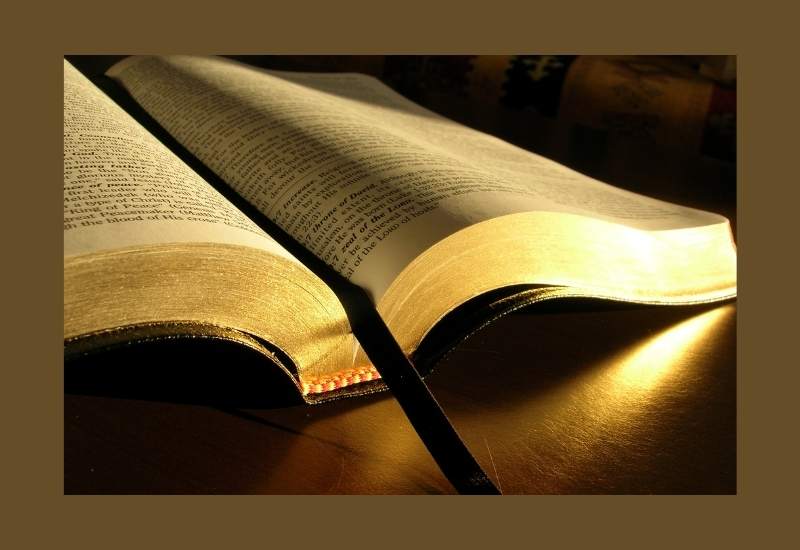
Disadvantages of a Chronological Bible
While a Chronological Bible is an excellent tool for understanding the sequence of biblical events, it does have some drawbacks—especially if you rely on it as your primary Bible.
Before purchasing a Chronological Study Bible, consider these potential disadvantages to ensure you’re using it in the right way for your spiritual growth.
1. Not the Best Choice as Your Primary Bible
Although we highly recommend using a Chronological Bible for personal study, it’s not ideal for church services, Bible study groups, or situations where you need to find Scripture quickly.
For example:
📖 If your pastor asks the congregation to turn to a specific passage, a chronological Bible may arrange the text differently, making it difficult to follow along.
📖 If you’re using it in a Bible study or small group, others may be reading from a standard Bible where the books are in traditional order.
📖 If you’re referencing specific chapters or verses, a chronological Bible might organize passages differently, requiring extra time to locate them.
Best practice: Keep a standard Bible (Genesis to Revelation format) as your primary Bible for church, teaching, and quick reference. Then, use a Chronological Bible as a supplementary tool for deeper study and historical insights.
If you’re new to Bible reading, we strongly recommend having a solid translation in traditional book order before incorporating a chronological version into your routine.
2. Can Make Learning the Books of the Bible More Difficult
If you’re a new believer or teaching children the order of the books of the Bible, using a Chronological Bible might slow down the learning process.
- Many Christians memorize the books of the Bible in Genesis to Revelation order, which helps with quick navigation and understanding the structure of Scripture.
- A chronological format doesn’t follow this traditional sequence, which could make it harder to learn where each book is located in a standard Bible.
💡 Tip: While enjoying a Chronological Bible, take time to familiarize yourself with the traditional book order. This will help you quickly locate passages in any Bible, whether digital or printed.
3. Don’t Become Totally Dependent on a Chronological Bible
Chronological Bibles are fantastic study tools, but they should not replace a standard Bible as your go-to reference.
- Most people won’t have a Chronological Bible on hand in everyday life, so it’s important to know how to navigate a traditional Bible layout.
- When sharing Scripture with others, it’s easier to quote passages and direct people to them when you know the traditional order.
- If you ever switch to a different Bible translation, chronological arrangements may vary slightly depending on how different scholars organize the timeline.
I personally love my NLT Chronological Life Application Study Bible because it enhances my understanding of Scripture. However, I always make sure to stay familiar with the standard order of the 66 books, so I can locate passages quickly in any Bible.
📖 Best practice: Enjoy reading and studying a Chronological Bible, but make sure you are comfortable navigating a traditional Genesis-to-Revelation format as well.
4. Finding Scripture Quickly Can Be More Challenging
One of the most valuable Bible study skills is knowing where key verses are located so you can quickly find them when needed.
- A traditional Bible allows you to quickly turn to a specific book, chapter, and verse, while a chronological arrangement may require extra steps.
- If someone asks you for a Bible verse about faith, forgiveness, or salvation, you’ll want to be able to flip to it immediately in a traditional Bible.
- The Genesis-to-Revelation format is what most Bible readers are familiar with, making it easier for group study, preaching, and reference.
⏩ Tip: If you use a Chronological Bible regularly, also practice locating passages in a standard Bible so you can find them quickly when needed.
Final Thoughts
A Chronological Bible is a fantastic tool for:
✅ Understanding the Bible’s timeline
✅ Seeing the historical flow of events
✅ Connecting Old and New Testament themes
✅ Gaining deeper biblical insight
However, it’s best used as a supplement rather than a replacement for a standard Bible.
If you love studying Scripture deeply, a Chronological Bible can be a powerful resource—but make sure you stay comfortable with the traditional Bible format for church, Bible study groups, and everyday reference.
Chronological Bible Buying Guide – Final Thoughts & Wrap-Up
A Chronological Bible is a powerful tool that can transform the way you understand Scripture. While most people stick to a traditional Bible, those who invest in a Chronological Study Bible often find it to be a game-changer in their personal Bible study.
If you’re considering buying one, here are a few important things to keep in mind:
1. Use It as a Supplemental Bible, Not Your Only One
While a Chronological Bible is a fantastic study resource, it should not replace your primary Bible. Most churches, Bible study groups, and devotionals use a traditional Genesis-to-Revelation Bible, so it’s important to have one that follows the standard order.
📖 Recommended translations for your primary Bible:
- NIV (New International Version) – Easy to read and widely used.
- NLT (New Living Translation) – Conversational and highly readable.
- ESV (English Standard Version) – Word-for-word accuracy with literary beauty.
- CSB (Christian Standard Bible) – Balanced between word-for-word and thought-for-thought translation.
- NKJV (New King James Version) – Classic and reliable, retaining the poetic flow of the KJV.
Use your Chronological Bible for personal reading, deep study, and historical insights, but keep a standard 66-book Bible for general use, church, and quick reference.
2. Stay Familiar with the Traditional Bible Layout
Even if you love your Chronological Bible, don’t lose sight of the traditional book order. Knowing the standard layout of the Bible will help you:
✅ Find Scripture quickly when needed in any Bible.
✅ Follow along in sermons and Bible studies with ease.
✅ Understand the structure and purpose of different biblical books.
Chronological Bibles rearrange Scripture for historical flow, but the original arrangement has a purpose too—grouping books by genre, theme, and authorship. Stay familiar with both formats for a well-rounded understanding of the Bible.
3. Buy from a Reputable Bible Publisher
Not all Chronological Bibles are created equal. Some editions provide rich study notes, historical context, and helpful cross-references, while others may be simplistic or lack essential features.
💡 When buying a Chronological Bible, look for trusted publishers like:
- Tyndale House Publishers (NLT Chronological Life Application Study Bible)
- Zondervan (NIV Chronological Study Bible)
- Thomas Nelson (NKJV Chronological Study Bible)
- Crossway (ESV Bibles with chronological reading plans)
Make sure to read reviews, check for study tools, and consider the format (print, digital, leather-bound, etc.) before making your purchase.
4. Most Importantly—Enjoy the Word of God!
Whether you read from a traditional Bible or a Chronological Study Bible, the most important thing is to spend time in God’s Word.
💙 God loves you deeply, and He desires to speak to you through Scripture!
📖 Read it. Study it. Meditate on it. Live it.
The Bible is alive and powerful (Hebrews 4:12), and whether you choose to read it in chronological order or in its traditional book layout, God will use it to strengthen your faith, deepen your wisdom, and draw you closer to Him.
🙏 May your Bible reading journey—whether traditional or chronological—bring you deeper into God’s truth, love, and grace!





Leave a Reply